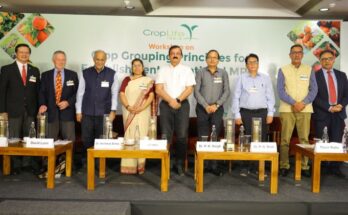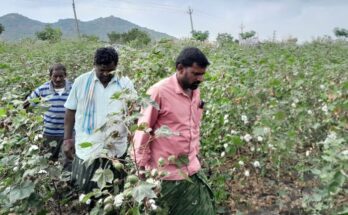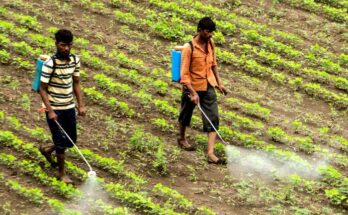Globally, India is the 4th largest producer of agrochemicals after the United States, Japan and China and has emerged as the 13th largest exporter of pesticides. It is a major hub of generic agrochemicals production, which leverages, among other things, the fact that branded molecules, exclusive to the producing companies, are open for larger use after the patent period of 20 years. The fact that 22 such molecules are going to come out of their patent period will substantially expand the offerings of the Indian companies to people at home and abroad alike and may help fetch extra revenue.
What is a patent and why is it given?
Any innovator has its exclusive right over the research and technology developed and when opened for use, gets rewarded by the way of giving the Patent right. Patent is a form of intellectual property (IP) giving the innovator/inventor a legal right over their invention/innovation for a limited period and forbids others to use it. It is to honour the innovative technology; to recover the innovation cost; and to get a return on investment in the development of the technology. As the benefit of innovation, patent period is availed by the entire world, not as a charity but as a protection from others copying the innovation during that period. The Trade-Related Aspects of Intellectual Property Rights (TRIPS) Agreement requires the member countries to make patents available for any inventions, whether products or processes, in all fields of technology without discrimination, subject to the normal tests of novelty, inventiveness and industrial applicability. The Article 27.1 of the agreement also requires that patents be available and patent rights enjoyed without discrimination as to the place of invention and whether products are imported or locally produced.
Benefits of off-patent molecules
Agrochemical sector is deeply interested in the molecules which are going to be off-patented as it creates an opportunity for its own commercial development. Pesticide companies, especially in developing countries, wait for generic active ingredient molecules as it provides huge opportunities for generic manufacturers to provide agrochemicals at a reasonable affordable price for farmers to protect their yield from pests and disease. Moreover, generic agrochemicals are same in quality of patented pesticides, effectively affordable in price for Indian and global farmers, are based on the same active substances and work in the same way in the crop as the patented pesticide, but cost much less. Both patented and generic pesticides are subject to the same approval process from the competent authority for registration, a generic pesticide is as safe and effective as the original patented pesticide and hence popular in farming community.
Current market size and trend
It has been observed that 30-40% of the off patent active ingredients are taken up by the generic manufacturers. Of these, those for fungicides and insecticides are more preferred to herbicides. About 60-70% of off patented molecules are not adopted due to their limited market, difficulty to manufacture and unavailability of key intermediates. The original inventor/developer works against the generic competitors by controlling the supply of intermediates and raw material and it is easier for them if the intermediates and raw material are rare. It has been observed that entry of generic competitors result in the fall in price, to overcome this R&D based companies develop cheaper and more efficient process of manufacture for those molecules which are going to be off patented. As the manufacturing process can also be patented, the strategy of R&D based companies help them to protect their active ingredients. In this situation, despite the active ingredient being off-patent, generic companies can be prevented from producing the same by the alternative process, if the new alternative manufacturing process for it is still protected. Many generic companies are now moving towards developing alternative manufacturing processes for generic active ingredients. Developing an alternative process for production of Isoproturon without using isocyanate intermediates is one such example.
Challenges for generics
Although generics give great opportunities but also pose challenges before the manufacturers in terms of how quickly they bring products into the market; how to offer their products in a crowded and noisy market where already this is available under a big brand; how to provide cost-effective and effective generics which is profitable as well, and such. A generic manufacturer always faces these challenges by the time they enthusiastically wait for off-patented molecules. The inventors, in order to continue their monopoly, always try to pose obstacles before the generic manufacturers by adopting the following strategies:
- Market Segmentation
- Synthesis/technology/manufacturing know-how
- Registration Data Protection (RDP)
- Intellectual Property Rights (IPR)
What is going off patent by 2030
There are around 22 pesticide active ingredients are about to get out of their IPR period in the next 10 years i.e. between 2021 and 2030. These are Bixafen, Chlorantraniliprole, Cyantraniliprole, Fenpyrazamine, Flubendiamide, Fluopicolide, Fluopyram, Fluxapyroxad, Isopyrazam, Mandipropamid, Penflufen, Penthiopyrad, Pinoxaden, Pyriofenone, Pyroxsulam, Sedaxane, Thiencarbazone-methyl, Valifenalate, Benzovindiflupyr, Sulfoxaflor, Saflufenacil, and Aminopyralid. The demand for some of these off patented technical grade molecules in the global market is expected to increase drastically. It is expected that the market size of these products will cross over US$ 4.1 billion by 2026. The reason is that the products like Chlorantraniliprole, Fluropyram, Fluxapyroxad, Cyantranilipore, Bixafen, Sedaxane, Fenpyrazamine and Flupicolide have a huge market. Industry players will have an opportunity, specifically in regulated markets, to choose the generics according to the demand of the market where so many products are becoming off-patent. In India, these generic agrochemicals will provide enormous growth to generic manufacturers and also to formulators who are directly or indirectly affected while the products are under IPR.
A word of caution
The increased regulatory pressure in the EU and now increasingly elsewhere is (in general) putting additional pressure on off-patent chemistry to a greater extent than patented chemistry. Companies need to take into account more than just sales. Beside factors such as chemistry and regulatory, a key element for any off-patent company post 2020 is a “comprehensive” portfolio of advanced chemistry in order to compete with the “solutions focused” multinationals that can offer a “bundled” seed, trait and crop protection package.
(Views expressed in the article are author’s own.)




